Billion Turnover With Only This Shrimp Cultivate
The cultivation of tiger prawns in Indonesia began in the early 1980s, and reached peak production in 1985-1995. So in that period shrimp tiger is the largest foreign exchange earner in fishery products. After 1995 tiger shrimp production started to decline. It is caused by the deterioration of environmental quality and disease attack.
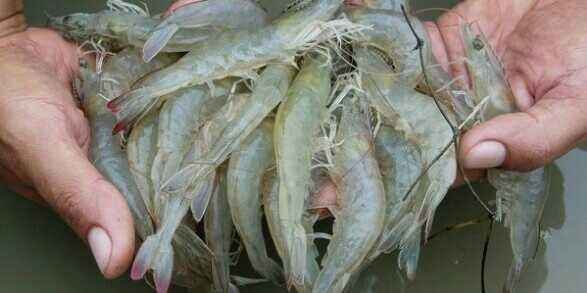
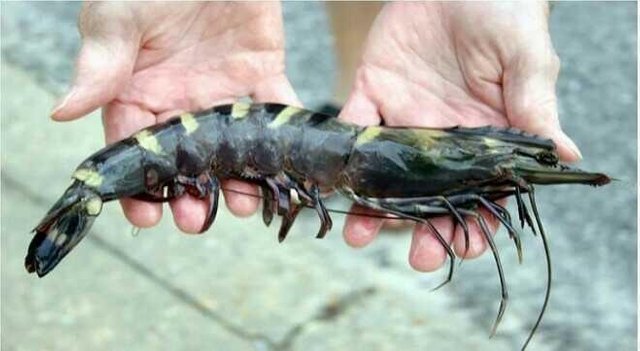
B. TECHNICAL CULTIVATION
Tiger shrimp culture includes several factors, namely:
1. Technical Terms
The location suitable for shrimp farming is in coastal areas that have clay soil texture or clay sand that is easily compacted so as to hold water and not easily broken. Good water is brackish water with salinity 0-33 ppt with optimum temperature 26-300C and free from contamination of hazardous chemicals.
Have inlet and outlet / outlet / outlet channel. Easy to get production means that is fry, feed, fertilizer, medicines and others. In intensive ponds must be available electricity from PLN or have their own Generator.
2. Type of Cultivation.
Based on the location, cost and operation of its implementation, the type of cultivation is divided into:
- Extensive or traditional ponds.
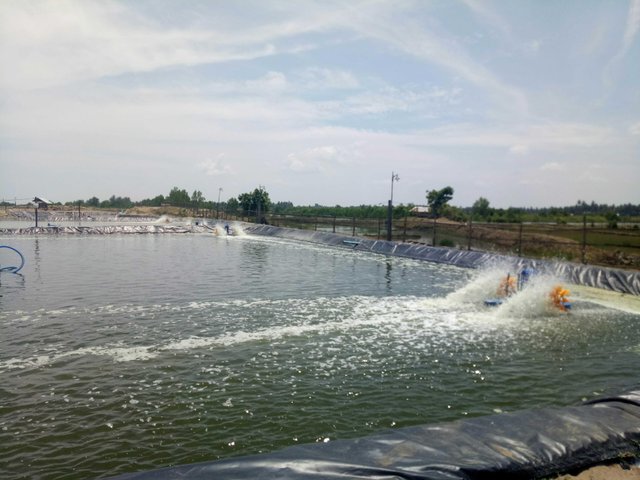
- Map of ponds usually in tidal land which is generally a mangrove swamp. Size and shape of irregular plots, not yet use fertilizers and drugs and irregular feed programs.
- The location of the pond is already in the open area, the form of regular plots but still in the form of large plots (1-3 ha / map), solid stocking is still low, the use of artificial feed is still small.
- Locations in areas specific to ponds in large areas, the size of the plots are made small for water management efficiency and shrimp control, high stocking density, already using the mill, as well as a good feeding program.
3. Fry
Good eggs have a high Survival Rate (SR), adaptability to high environmental changes, colorless / not pale either black or red, active moving, healthy and have a complete body tool. Fry quality test can be done simply, that is put a number of fries in a container of pots or basins are given water, stir the water with a fairly tight for 1-3 minutes. Good and healthy eggs will resist the mortar by swimming against the current of the water, and once the current has stopped, the fries remain active.
4. Land Processing
Land processing, including:
Rapture of mud.
Each cultivation must leave the remaining cultivation in the form of organic sludge from the rest of the feed, shrimp feces and from dead shrimp. The dirt must be removed because it is toxic to harm the shrimp. Sludge removal can be done by mechanical means using a hoe or suctioning with a water pump / alkon.Reversal of Soil.
The soil at the bottom of the pond needs to be reversed by being hijacked or hoeed to free the toxic gases (H2S and Ammonia) that are attached to the soil particle, to soil the ground and kill the seeds of panyakit due to exposure to the sun / ultra violet.Liming.
Aim to neutralize soil acidity and kill disease seeds. Done with lime Zeolite and Dolomite with dose of each 1 ton / ha.Drying.
After the soil is chalked, let it dry and crack the ground, to kill the seeds of the disease.
5. Water Inclusion
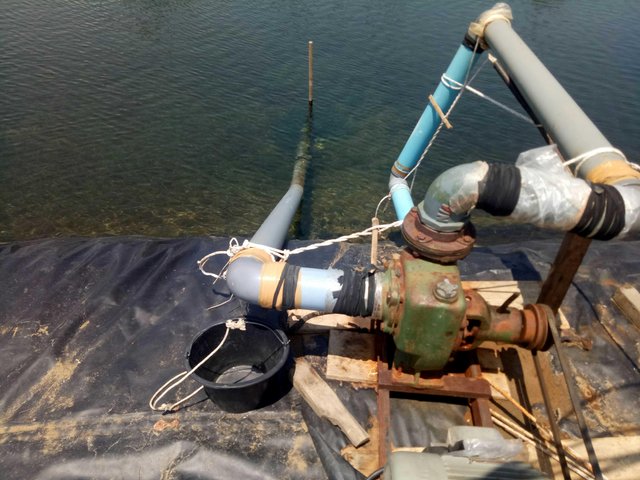
After 3 days left, water was put into the pond. The first water intake is as high as 10-25 cm and allow a few days, to allow the chance of growing plankton seeds. After that the water is inserted to a minimum of 80 cm. Saponen treatment can be done to kill fish entering the pond. To fertilize plankton before the fries are dispersed, water is chalked with Dolomite or Zeolite at a dose of 600 kg / ha.
7. Maintenance.
At the beginning of cultivation, preferably in the area of fry stocking is insulated with waring or hapa, to facilitate the feeding. The adhesive can be expanded according to shrimp development, after 1 week of bulkhead can be opened. In the first month, the water quality should always be stable. The addition or replacement of water is done with caution because the shrimp are still vulnerable to drastic changes in water conditions.
Starting the age of 30 days sampling to know shrimp pekembanghan through heavy weight shrimp. Normal shrimp at the age of 30 days has reached the size (number of shrimps / kg) 250-300. For the next sampling is done every 7-10 days. Production of dissolved organic material that tastes of dirt and feed residue is quite high, therefore water should be treated with lime zeolite every few days with a dose of 400 kg / ha.
From age 60 days upwards, what must be considered is water quality management and control of shrimp conditions. If the concentration of organic matter in the pond is getting higher, causing the quality of water / shrimp environment also decreases, consequently shrimp is easy to experience stress, which is marked by not willing to eat, dirty and silent in pond angle, which can cause cannibalism.
8. Harvest.
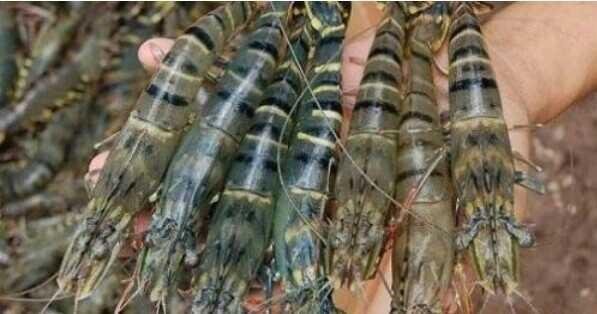
Shrimp harvested because of the achievement of harvest weight (normal harvest) and due to disease (harvest emergency). Normal harvest is usually done at the age of approximately 120 days, with normal average size 40 - 50. Moderate harvest emergency if the shrimp attacked malignant disease in large scale (eg SEMBV / white spots). Because if not immediately harvested, the shrimp will run out / die.
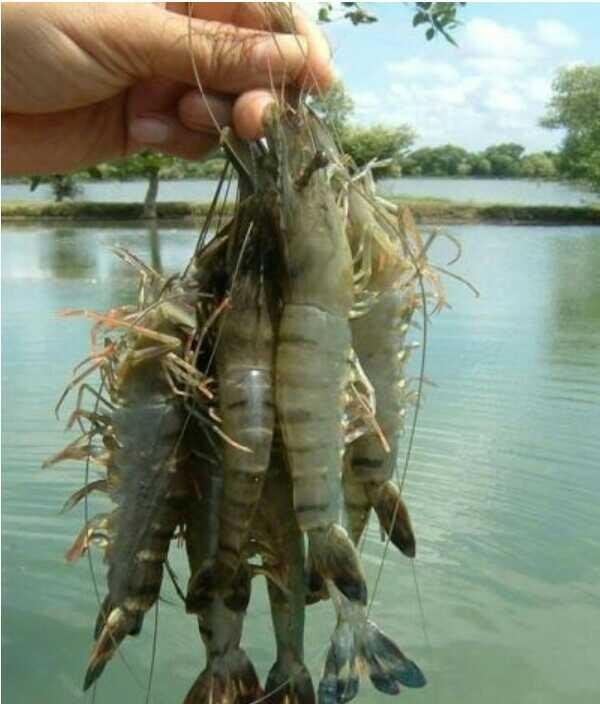
Shrimp are harvested with good quality requirements are large, hard skin, clean, slippery, shining, complete body tool, still alive and fresh. Catching of shrimp at harvest can be done with mesh stocking or nets tug and taken by hand. When the harvest is either the night or early morning, so that shrimp are not exposed to sunlight so that the dead shrimp do not quickly become red / damaged.
Maybe that's all I can share because my experience is still lacking, please to senior to leave your comments, thanks,
Maybe you are interested to read it sir @lauiscpt

